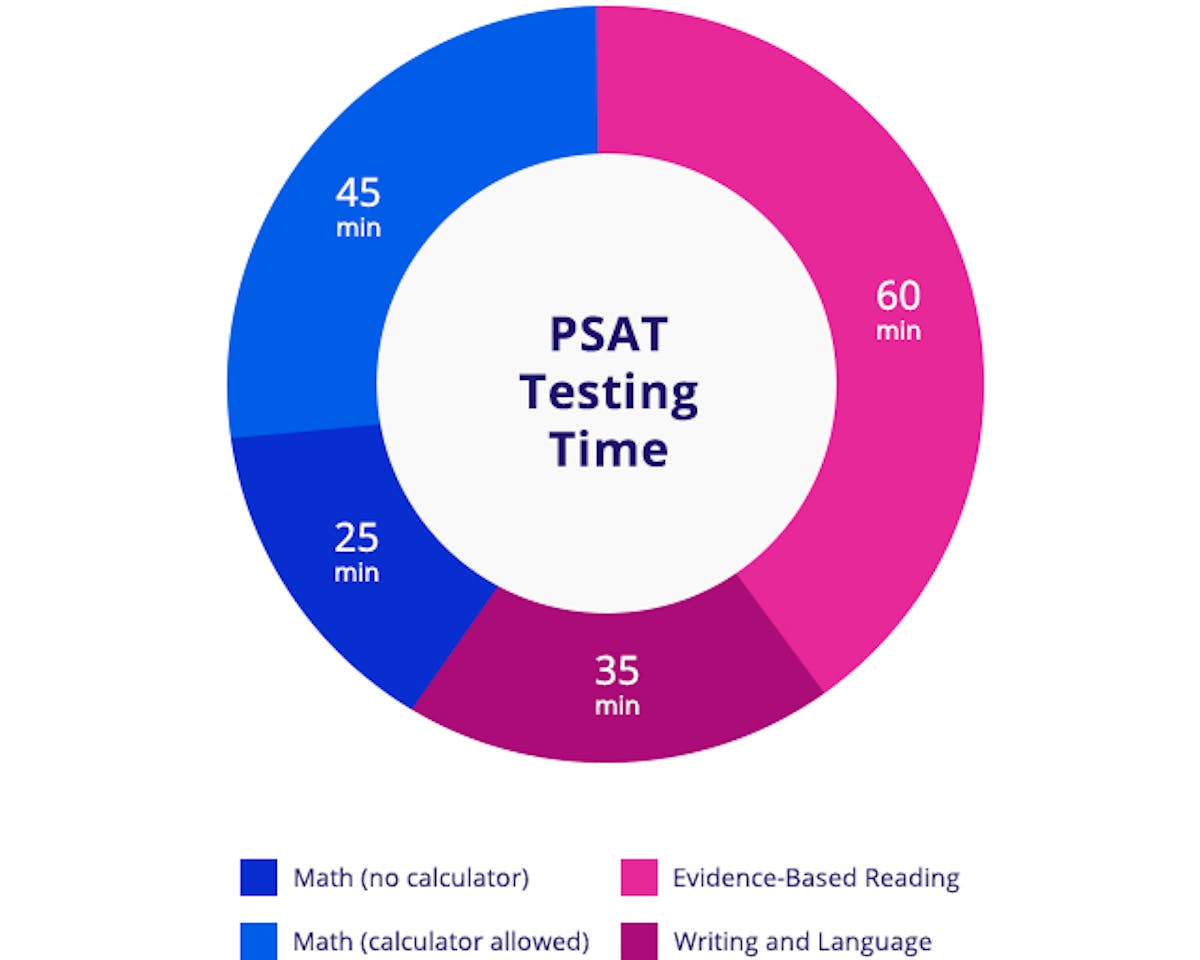What is the PSAT?
The PSAT is mostly a practice version of the SAT®, but it can also lead to more money for college. The highest performers on this exam are eligible to earn scholarships, and even just becoming a Commended Scholar can be a helpful addition to your application.
About the PSAT
The Preliminary SAT, also known as the PSAT/NMSQT® (National Merit Scholarship Qualifying Test), is a practice version of the SAT exam. You can only take the PSAT once per year, and many students take the test in both 10th and 11th grade. If you earn a high score on the PSAT your junior year, you could qualify to receive a National Merit Scholarship—$180 million dollars in merit scholarships are awarded to students each year. The PSAT is 2 hours and 45 minutes long and tests your skills in reading, writing, and math. Unlike the SAT, the highest score possible on the PSAT is 1520.

How long is the PSAT?
The PSAT is often taken during the school day, in place of other classes. The test itself takes about 3 hours, including break time.
What are the PSAT sections?
You will receive a composite score, two section scores, and a variety of subsection scores. The test itself includes four timed sections: Evidence-Based Reading, Writing and Language, Math (no calculator), and Math (calculator allowed).
Evidence-Based Reading
Number of Questions | Time to Complete | Passage Genres | Score Range |
|---|---|---|---|
47 | 60 Minutes | World Literature, Social Studies/History, Science | 80–380 (½ of verbal score) |
The Evidence-Based Reading section of the PSAT will test your ability to read a passage, think critically about its main ideas and key details, and answer related questions. These questions will test concepts like command of evidence, words in context, and analysis in history/social studies and science.
Command of evidence questions will provide 4 excerpts from the passage and ask you to determine which one provides the best evidence for the previous question. Questions about words in context will focus on secondary word meanings.
The Reading Test includes passages related to literature, history and social studies, and science. Some PSAT questions will ask you to examine hypotheses, interpret data presented in a variety of ways, and conduct other analysis that is based only on what is either stated or implied in the passage.
